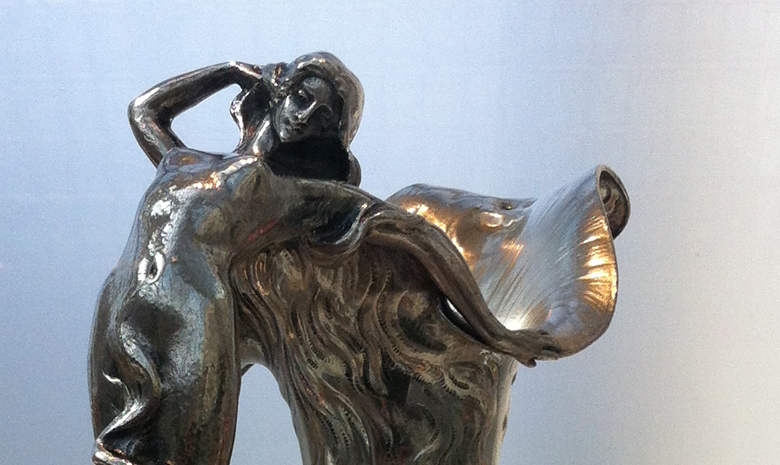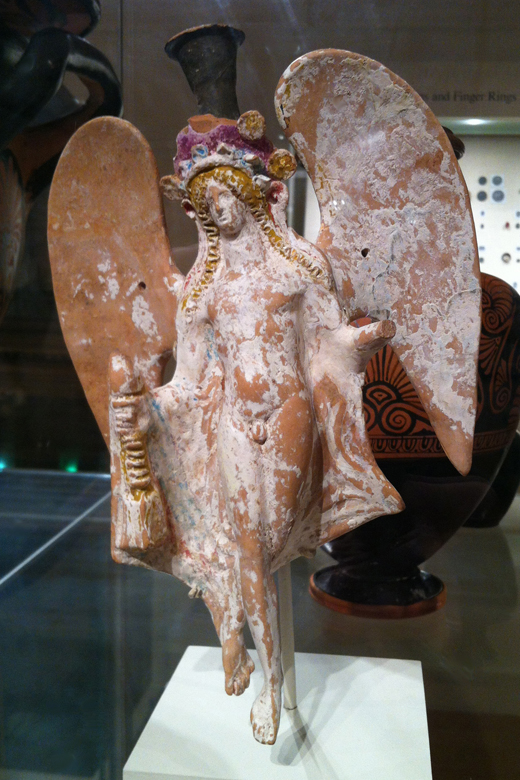LXXXVIII
Psyche meets delos
Why does this written doe bound through these written woods?
Asks Szymborska
The miners of Northumberland we shall for ever praise
For being so kind and helping us in these tyrannisin days…
From “The Durham Strike,” The Shuttle and Cage: Industrial Folk Ballads. Ewan MacColl, ed. London: Workers’ Music Association, 1954. p. 14
I wuz waitin for my man when the Pillsbury GodotBoy showed up
And Lefty, where he at?
Lefty? He moved outa Watts.
The concept of essence is fantastically dangerous
To build a house of kards
then dashian to the ground
Curious things come in threes under trees:
Eve and Newton’s apples
Bodhi and Buddha
Broker and Buttonwood
I shall astonish Par(ad)is(e) with an app(le)(t)!
We shall come over
Guest becomes host
I’ve got smokeshine, on a Sun Tzu day
The scapulae: from when we had shells
The origin of your father’s dreams
You’ve let go of a lot. Let go of some more.
In his discerning, lucid “landscape” of the principles of Chinese medicine, The Web That Has No Weaver, Ted Kaptchuk brings this reader up short, in his summation of his preceding pages:
For the purpose of discussion, we may consider traditional Chinese medical examination, diagnosis, and treatment as three distinct categories. In practice, however, they are phases of a continuous process. The patterns of disharmony are the framework of this process, and so, in a sense, they comprise a theory. The Western mind, however, requires tha a theory sum up phenomena and formulate a general principle to explain their nature and relationship. A theory implies a truth. Are patterns of disharmony real and true? This is a tricky question that brings us to the abyss that separates Chinese and Western thought. [Ch. 10, “The Web That Has No Weaver – and Mount Sinai” p. 256]
In one sentence, the last one, we are returned, abruptly, to Rudyard’s front and back yard. Never the twain shall meet. Only apartness, an unbridgeable gap.
Is this true? Is it useful to conceptualize the distinct patterns of Chinese and Western thought in terms of their abysmal (void-like) distance from one another? If distance is privileged as the determining factor, we arrive at a Grand Canyon that, in its awesome evocation, obliterates human scale, and with it human form. Even, by implication, existence. The mountain is painted with no human travelers woven into the landscape, poling their fishing boats, crossing bridges over cascades or wending toward a mountain retreat. The very body we aim to bring into harmony with itself and the universe vanishes.
There is an old Rolling Stones song, “Gimme Shelter,” in which Merry Clayton’s voice cuts through the instrumental density and even over the other vocals. War, children – it’s just a shot away. And later, Love, sister – it’s just a kiss away.
The distinction between Chinese and Western thought, is actually that of two modes of breathing. In the latter, breath catches at the end of inhalation and beginning of exhalation, and vice versa. Respiration is neither mechanically, organically, or experientially a continuous flow. Western breathing is like riding a bicycle and halting the pumping action at the top and bottom of each cycle.
But when inhalation and exhalation shade into one another – if the diaphragm does not freeze as it reaches its limits, but rather begins its reciprocal motion ahead of the lungs being fully “full” or fully “empty,” we experience not only a different mode of breathing, but also, in the most basic and embodied way, Chinese thought itself.
Does this process occur without our realizing it, or do we need to consciously attend to it in order to reinvoke the breathing of a well-fed, sleeping infant? Assuming, that is, we ever were one.
When this revolution in breathing happens, the Grand Canyon shrinks to a rivulet in the sand which is in turn swept away by the tide. There is no distance in the sea, not really.
In consequence of its history, the West has put all its chips on discontinuity – a discontinuity of ultra-particulars, which it painstakingly manufactured over the course of centuries – and developed, in parallel fashion, forced coherence to cure its refraction. The irony, and here I revert to Western terms, is that coherence cannot be forced because it already exists and will simply re-establish itself if meddled with, and in ways we perceive as even more discontinuous and therefore in need of greater manipulation.
We get tired long before the world does. Whack-a-mole turns to Whack-‘em-all. Which goes for cultures and individuals alike.
In the silent remix of “Gimme Shelter,” if you listen with open ears, you can hear Mick’s unwritten, and Merry’s unsung, words: Dao, children – it’s just a breath away.
And here, our little Greek friend Chiasmus, whose etymology includes “chasm” scrawls a graffiti on the subway wall: Truth is process: process truth.
Between war and love, the lyrics to “Gimme Shelter” also include: Rape, murder! It’s just a shot away, (a lady mondogreen for Che Guevara! hotly debated at the time). It is worth noting that Ms. Clayton was pregnant when these tracks were recorded and suffered a miscarriage soon afterward. Listening, one can hear her voice break twice as she struggles to reach high notes – most notably on the word rape, with its sharply ascending “a” – that are simply out of her range. Much of the song’s drama inheres in that it is being played in a scale that is, for her, inhuman.
The problem with human scale is the idea of human scale
A too strong link weakens the entire chain
The problem with individualism is that it constructs the individual to such a degree that it destroys her
And the 64,000 rupee question: does a bodhisattva have more and better buddhanature than the Buddha?
The road to hell is paved with interventions.
Does the buddha have bodhisattva nature?
I was a sternocleidomastoid for the FBI
A journey to the summit of Mt. Sinai will eventually bring you to Masada. And your tablets will turn to pot shards.
Awe at “creation,” is, at bottom, the seed of fear. Therefore beware of cultures that “create.”
And a slime to every purpose under heaven
What we call homeostasis is an idea that cannot manifest physically. Even if homeostasis is sought, it is done so through the dynamic play of opposing forces that continue to engender eachother rather than establishing a energic null. The countervailing forces that, if absolutely equal, would arrive at homeostasis is more accurately described as shi, which consists of an endless sequence of movements toward and away from 50/5, a state never achieved.
The closest analogue to homeostasis may be imagined as the membrane connecting and separating, but certainly animating, the oppositional and the relational.
Take 3 tablets and call me in the a.m.
3 Tablets? Moses only gave me 2.
Ah, go ask Hezekiah what happened to the third.
Knee deep in the Big Talmuddy…
Muddy water let stand
Becomes clear
What a Laozi idea
I saw the best memes of my generation – I mean mimes…
Waves and memes…
As me and me marrer was going to work,
We met wi’ the devil, it was in the dark;
I up wi’ my pick, it was in the neet,
I knocked off his horns, likewise his clubfeet.
Follow the horses, Johnny, me laddie,
Follow the horses, Johnny, lad O!
Follow the horses, Johnny, me laddie,
O follow them through me,
Johnny lad, O!
“The Collier’s Rant,” The Shuttle and Cage: Industrial Folk Ballads. Ewan MacColl, ed. London: Workers’ Music Association, 1954. p. 15
Too much love evokes hate as a counter-balance
Spiteful shiteful
Something funny about the glenohumeral joint
I’ve been traveling for some time
With my fishing pole and bottle of ‘shine
On these long dark dusty roads
(And it’s) lookin’ there’s nowhere to go
I guess I gotta hide away, far away
Cause I gotta find a way, to find my way
I gotta hide away, far away
Cause I gotta find a way, to find my way…
[Bubba Sparxxx, “Deliverance”]
Out of the great processes of culture, identity is established by freezing the tension between pre and pro-scriptive customs at a particular point, and then asserting that as an origin or essence. Q.v., the archaeological absence of pig bones in a handful of middens in certain Canaanite hill towns signaled a change far upstream of the eventually manifestation of Jewish, then Muslim dietary laws.
How powerful in constituting and establishing a distinct “us” – in relationship to, inevitably, a “them” – inheres in that which we do not practice. How important not is to creating a story about how we know who we are and how others recognize us as different.
E.g.: Historical and physical evidence affirms that several sections of the Umayyad Mosque of Damascus, built during the first decade of the eighth century by the caliph al-Walid ibn ‘Abd al-Malik (r. 705-715), were covered with lavish glass mosaics representing landscapes and buildings. As with the Dome of the Rock, the decoration of this mosque was distinguished by a complete absence of human and animal imagery. Through the exclusion of such depictions from religious buildings, the Umayyad caliphs initiated a practice that has characterized Muslim religious architecture to the present day. This conscious avoidance of figural imagery in religious contexts was not limited to architecture and was seen in coinage, Qur’ans, textiles and other artistic media. Since the Qur’an itself does not mention figural art, the Umayyads relied upon the hadith, teachings of the Prophet, for justification of this practice. In addition, the Umayyads pursued a distinct visual identity that would not only assert their power and legitimacy but would also set them apart from their Byzantine rivals and Sasanian predecessors: religious buildings without figural decoration signaled their control over recently conquered territories. [Maryam D. Ekhtiar, “Art of the Early Calipahates (7th to 10th Centuries)” in Masterpieces from the Department of Islamic Art in the Metropolitan Museum of Art. New York: The Metropolitan Museum of Art, 2011, p. 22]
Hic sunt simiae
Assimianilationist: “higher” primates blending into the mainstream…
A scapula and a humerous walk into a joint…
What does it mean, as was commonly said in Chinese, that what the literary painter does is “write”?
”Whether in the art of writing or that of painting,” one should “apprehend things by becoming one with their spirit.”
(Whatever the subject) “…once the intentionality appears, it is complete,” the artist has “reached the internal coherence” and “penetrated the dimension of spirit.” (Shen Gua).
…Like the poet, the painter refuses to grasp the figuration “tightly.” Far from indicating indifference on the part of the artist, this distance preserves the field of expansion necessary for its expression…
Ancient painting was celebrated by the literati because it “depicted the intentionality” and the state of mind, not the “form.” The one is even the condition of the other: it is by “forgetting the form,” which is tangible, present and objectified, that one “reaches the intentionality” and the state of mind. These can only be captured “beyond the ink and brush,” just as the richness of meaning can only be grasped “beyond the words.” [Jullien, …Nude, pp. 101-102]


